HAL SDIO Use Cases ¶
User application starting a driver with USE_HAL_SDIO_CLK_ENABLE_MODEL ¶
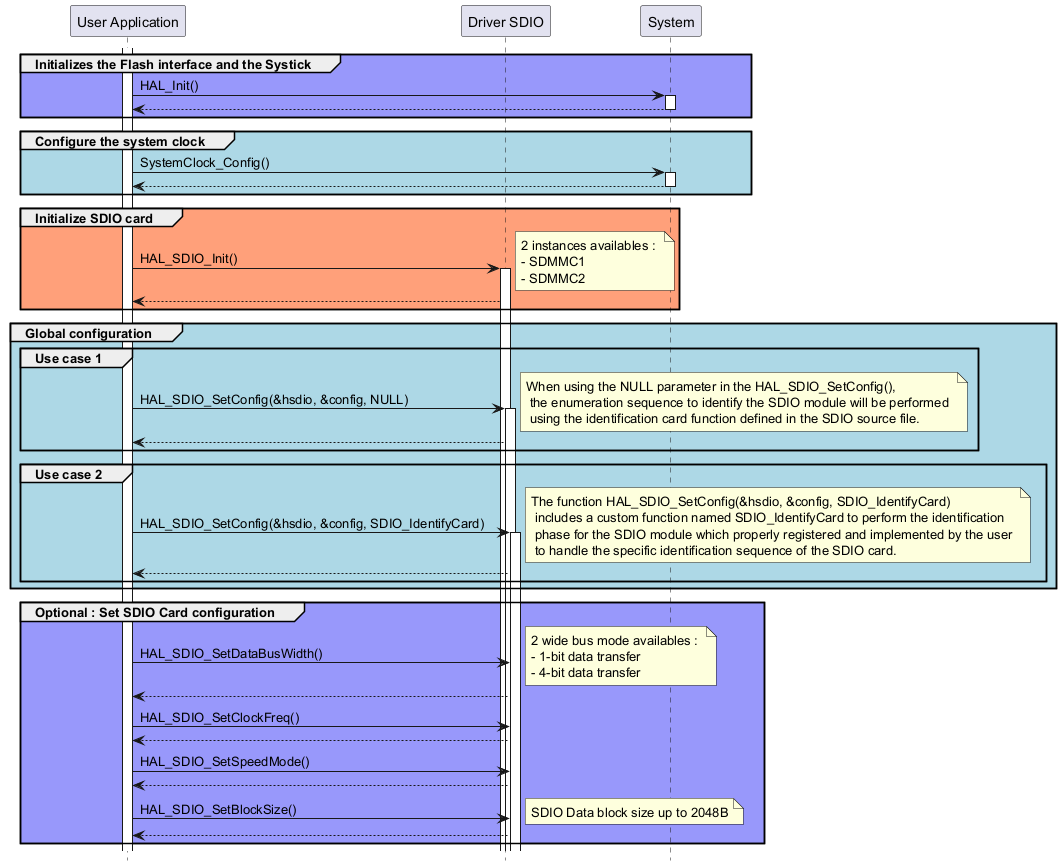
Called functions:
-
HAL_SDIO_SetClockFreq()
User application starting a driver without USE_HAL_SDIO_CLK_ENABLE_MODEL ¶
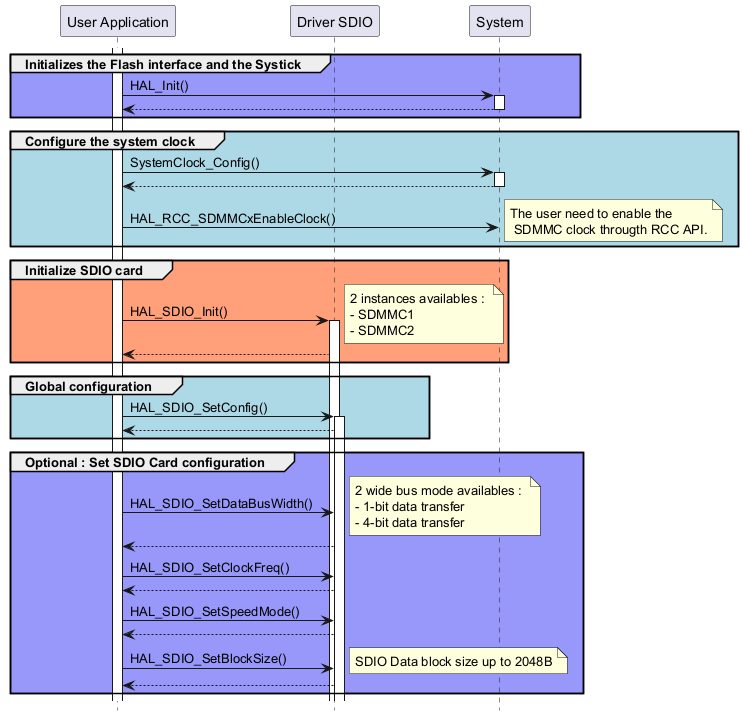
Called functions:
-
HAL_RCC_SDMMCxEnableClock() -
HAL_SDIO_SetClockFreq()
User application starting an Extended Polling transfer using Block mode ¶
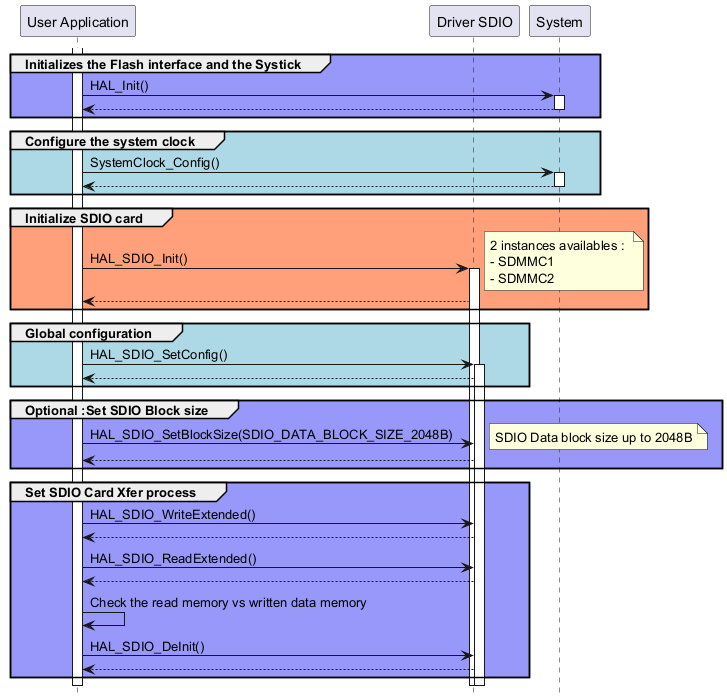
Called functions:
User application starting an Extended DMA transfer using block mode ¶
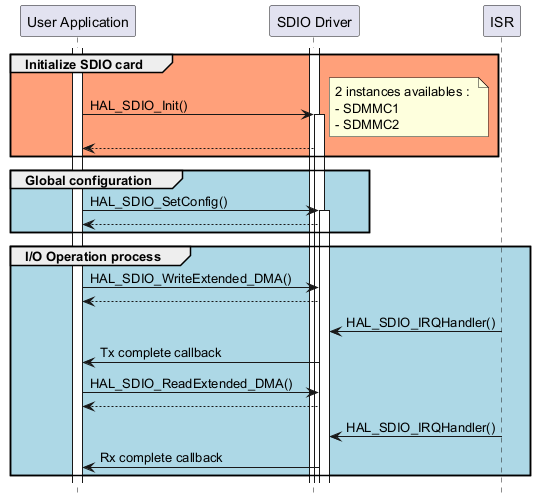
Called functions:
Starting an Extended DMA transfer with enabling IO Function Interrupt ¶
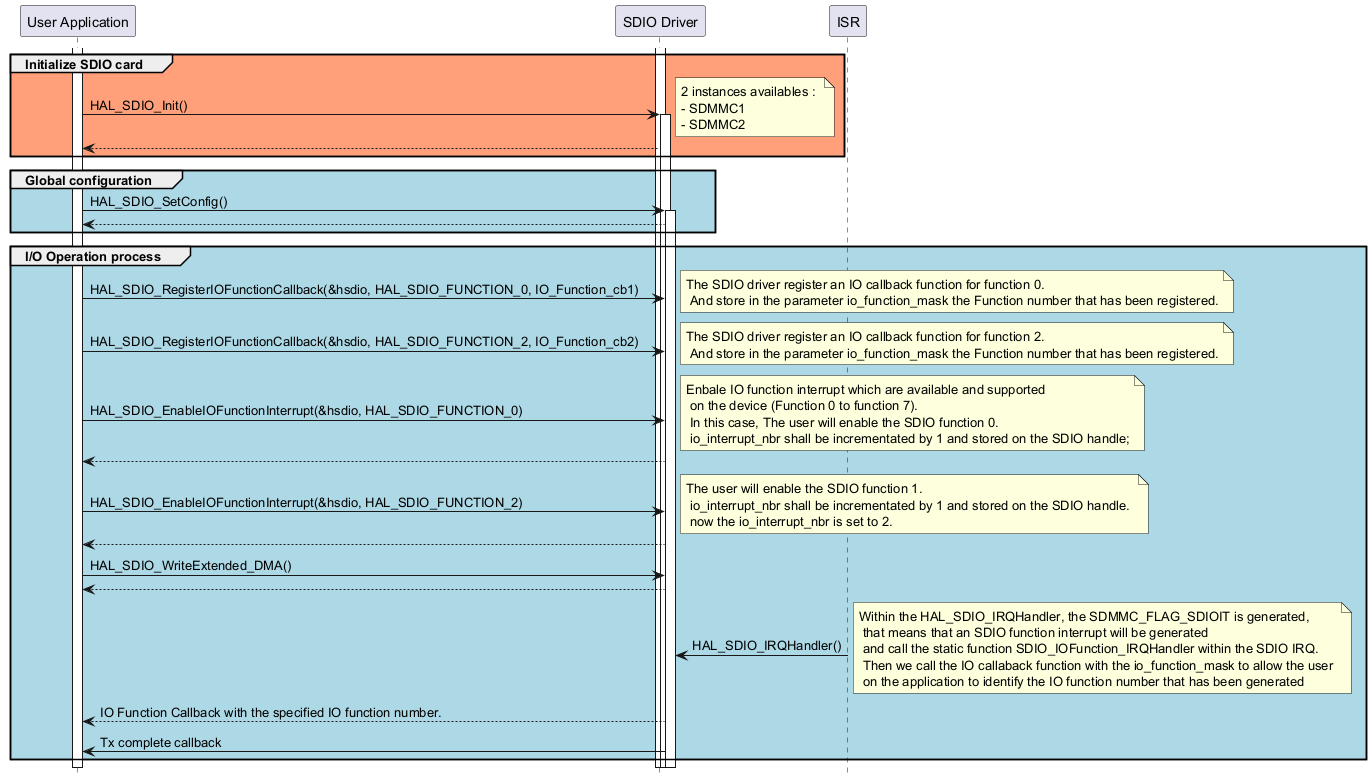
Called functions:
User application starting an Extended DMA transfer using block mode ¶
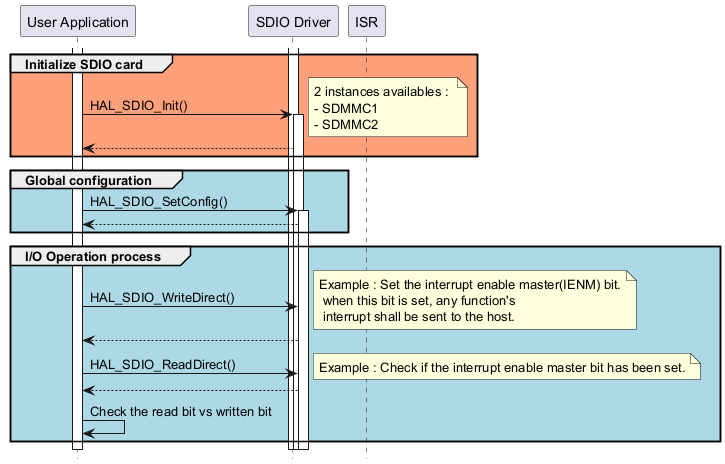
Called functions: